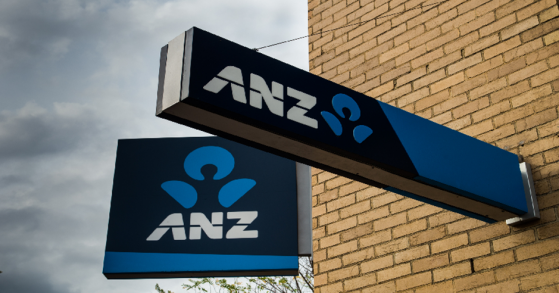Highlights:
- The S&P/ASX 200 index (INDEXASX:XJO) opened up today (8 September), was 0.58% strong at 6,768.30 at 10:20 AM AEST.
- Sectors painted a mixed story as ten out of eleven were lower. Energy was the only sector that was up in the morning trading hour.
- Financial sector was quoted 2.05% lower at 10:20 AM AEST.
Today, 10 out of 11 significant sectors under the Benchmark S&P/ASX 200 index have opened their respective trading sessions in the red territory. The ASX 200 Financials sector was one of such worst performing sectors on ASX on Wednesday. On Thursday too, the sector was quoted 2.08% down at 10:20 AM AEST.
The S&P/ASX 200 Financial sector (INDEXASX:XFJ) closed trading at 6707.2 points after losing 1.996% or 136.6 points on ASX on Wednesday (7 September 2022).
Meanwhile, the S&P/ASX 200 Banks (INDEXASX:XBK) closed yesterday’s trading session 2.18% lower at 2453.9 points on ASX.
What were the recent developments in the Australian economy?
The Australian economy achieved the following in the June quarter that ended on 30 June 2022:
- As per the data shared by the Australian Bureau of Statistics (ABS), the Australian economy increased by 0.9% in the June quarter of 2022. It has surged by 3.6% over the last 12 months. The strong growth in the nation’s economy was driven by household consumption, which alone grew by 2.2%, and exports.
- Australia reopened its domestic and international skies, and travel restrictions were lifted during the June 2022 quarter. Tourism got a boost during this period, and international travel reached 38.6% from the pre-pandemic levels.
- During the June 2022 quarter, the Australian household consumption of transport services gained 37.3%, reaching two-thirds of the pre-pandemic levels. During the given period, the expenditure on eating out and accommodation gained 8.8% and went back to the pre-pandemic levels. Furthermore, restrictions on capacity were lifted in the June 2022 quarter, which increased recreation and cultural expenditure by 3.6% in the country.
- Over the entire June 2022 quarter, people began to dine out more. As a result, food bought from supermarkets and speciality stores came down 1.2%. This was the consecutive third quarter fall in supermarket purchases.
- The household saving rate came down in the June 2022 quarter. However, the savings rate was still above the pre-pandemic levels. The Australian households saved around 8.7% of their income during the quarter, down by 11.1% compared to the previous quarter.
- The June 2022 quarter was a good period for the labour force as it recovered from the time of Omicron and floods in New South Wales and Queensland. The unemployment rate stood at 3.5% in June 2022.
- The June 2022 quarter also witnessed significant growth in export volumes by 5.5%. This was the fastest rate of growth since September 2000. This rapid growth was primarily driven by rural goods such as wool, meat and cereals, along with commodities such as iron ore and lithium.
- The June quarter has experienced a trade surplus of 7.1% of GDP, which has accounted for the largest trade surplus in the history of the national accounts. Backed by the trade surplus, Australia has recorded the 13th consecutive current account surplus in the June 2022 quarter, followed by 175 consecutive quarters of current account deficits.
- Consumer prices gained by 1.8% in the June 2022 quarter and 6.1% over the entire year. This was considered the fastest annual growth in consumer prices since June 2001. Consumer prices were mainly driven by housing and fuel prices.
- The June 2022 quarter witnessed a strong labour market with a rise in wage price index by 0.7% and 2.6% in the entire year.
- Meanwhile, miners have continued to earn benefits from increasing commodity prices.
This article primarily features the ASX performance of the ‘big-four’ Australian banks- Australia and New Zealand Banking Group Ltd (ASX:ANZ), Commonwealth Bank Of Australia (ASX:CBA), National Australia Bank Ltd (ASX:NAB), and Westpac Banking Corp (ASX:WBC).
Australia and New Zealand Banking Group Limited (ASX:ANZ)
Shares of Australia and New Zealand Banking Group Limited (ASX:ANZ) opened 0.90% up at AU$22.49 a piece on Thursday. The stock however, closed Wednesday’s trading session in the red territory.
Australia and New Zealand Banking Group’s share price declined almost by 20% on ASX over the last 12 months. Furthermore, the bank’s YTD-based share price marked a loss of 19.80% on ASX as of 10:14 AM AEST today.
Commonwealth Bank of Australia (ASX:CBA)
One of the Australian ‘big four’ banks, Commonwealth Bank of Australia (ASX:CBA) shares opened 0.68% up at AU$94.74 per share today.
Commonwealth Bank’s share price marked a loss of 7.92% on ASX during last one year. On the other hand, Commonwealth Bank’s YTD-based share price fell by 7.55% (as of 10:16 AM AEST on ASX today).
National Australia Bank Limited (ASX:NAB)
Shares of the notable financial institution, National Australia Bank Limited (ASX:NAB), opened 0.75% higher at AU$29.51 per share on ASX today.
In last one year, National Australia Bank’s share price has gained 2.36% on ASX. Its year-to-date share price has gained 0.44% as of 10:17 AM AEST on ASX.
Westpac Banking Corporation (ASX:WBC)
Shares of one of the Australian ‘big four’ banks, Westpac Banking Corporation (ASX:WBC), ended Wednesday’s trading session in the red zone. However, on Thursday, the shares opened 1.15% stronger at AU$21.06 per share.
Over the last 12 months, Westpac’s share price registered a loss of over 19% on ASX. Furthermore, Westpac’s YTD-based share price declined by almost 3% (as of 10:18 AM AEST on ASX).
